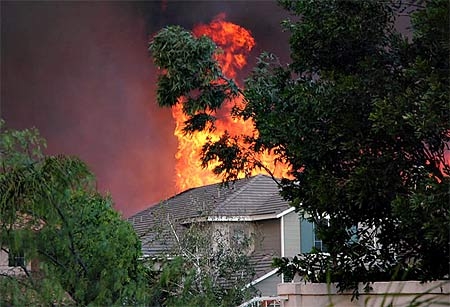
In uninhabited areas, authorities can let wildfire run their course. But that's not an option when homes are threatened, said Thomas Scott, UC Cooperative Extension specialist in the Department of Ecosystem Sciences at UC Riverside. Scott also serves at UC Berkeley in the Department of Environmental Science, Policy and Management.
"The reality is that if you are trying to rescue people's lives or trying to save people's houses, you end up spending an awful amount of money," he said.
The number of wilderness communities rose during the 1987 and 1997 housing booms, Scott said. Development slowed during the recent recession, but is showing signs of heating up again. Scott urges local officials to do a better job of directing growth adjacent to wild areas.
Homes in wilderness communities sometimes "can't be saved in a large conflagration," Scott said. "The question then becomes, can you expect society to underwrite your desire to live in a chaparral?"
Additional fire coverage with UC Agriculture and Natural Resources experts:
Nearly 10,000 acres burned in Southern California Wildfires
KQED Radio, Forum with Michael Krasny
Host Dave Iverson interviewed Bill Stewart, UC Cooperative Extension specialist in the Department of Environmental Science, Policy and Management at UC Berkeley. Stewart is co-director of the Center for Fire Research and Outreach at UC Berkeley.
Some evacuations lifted in San Diego fire area
Julie Watson and Elliot Spagat
For this story, Gillian Flaccus interviewed Max Moritz, UC Cooperative Extension specialist in the Department of Environmental Science, Policy and Management at UC Berkeley, and Jan Gonzales, coordinator of the Wldfire Zone website, for this story.